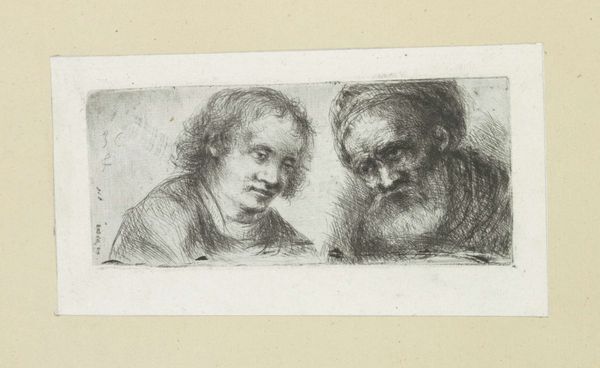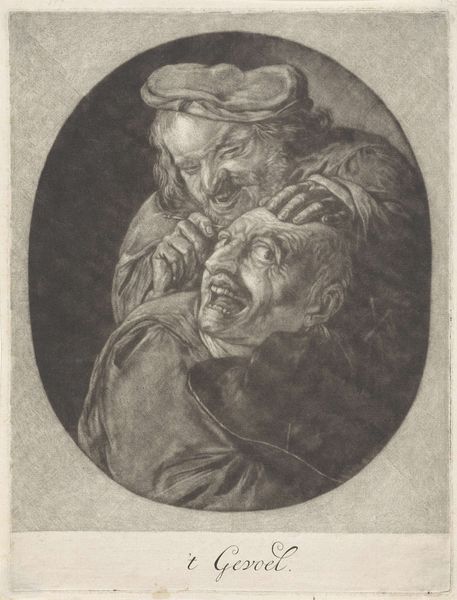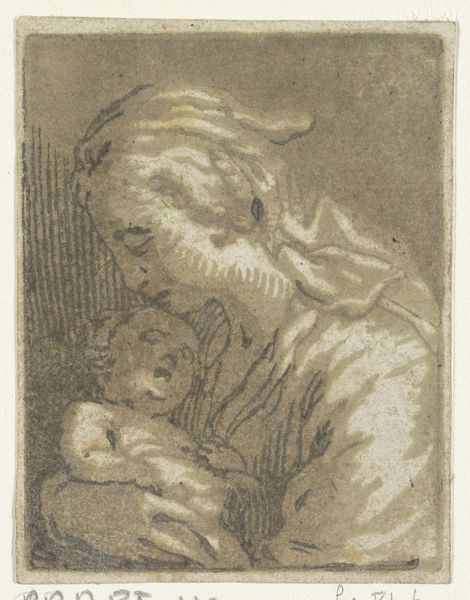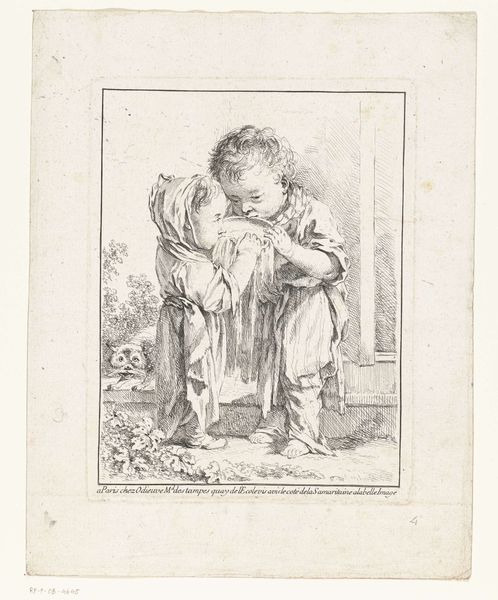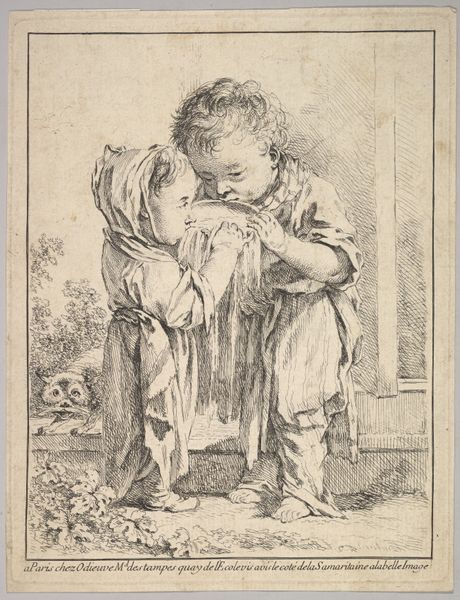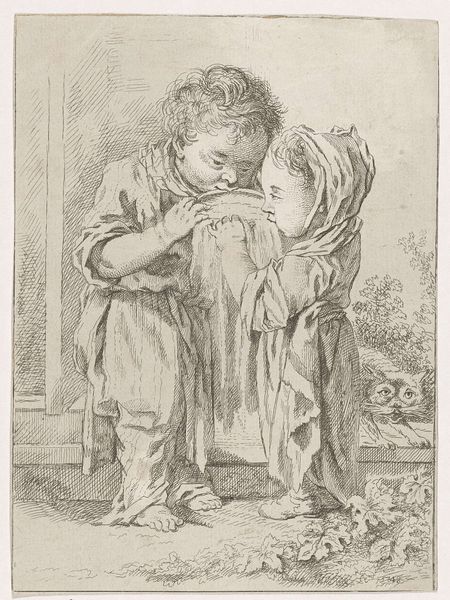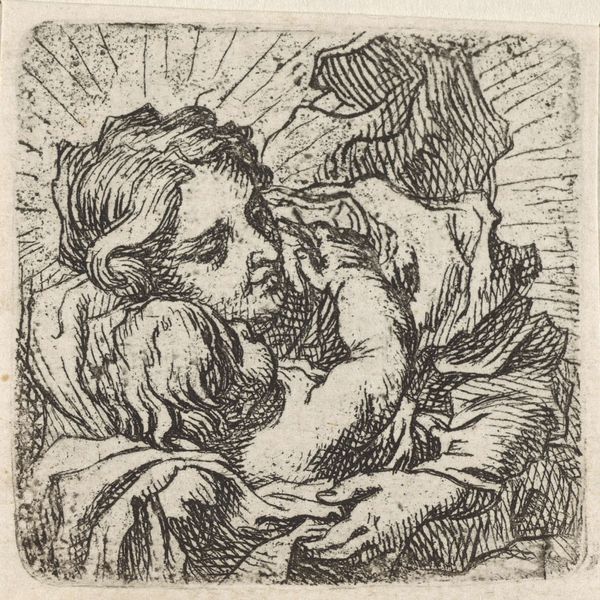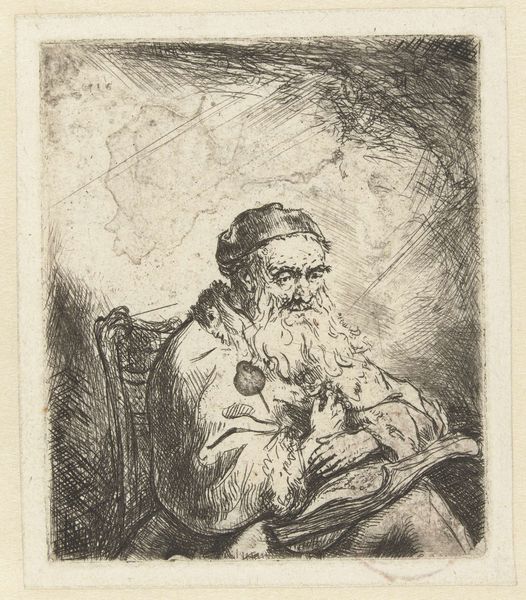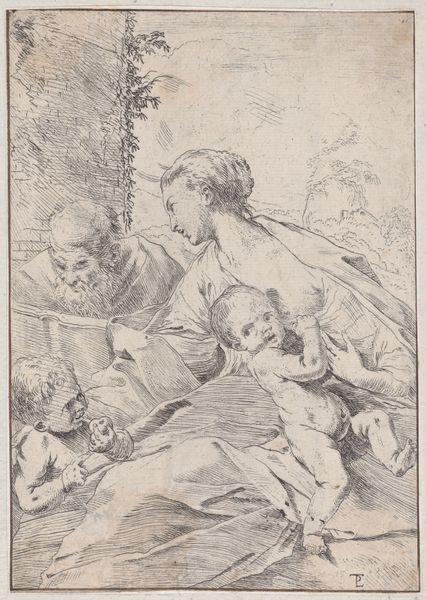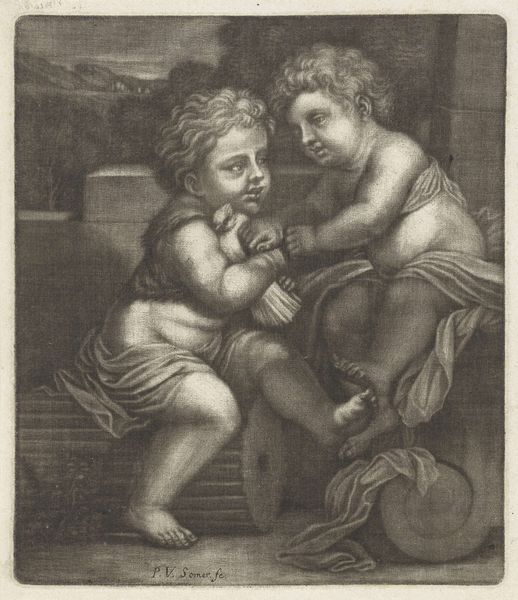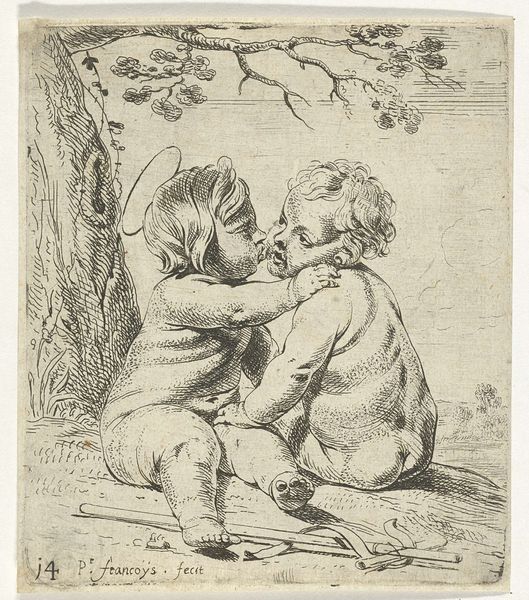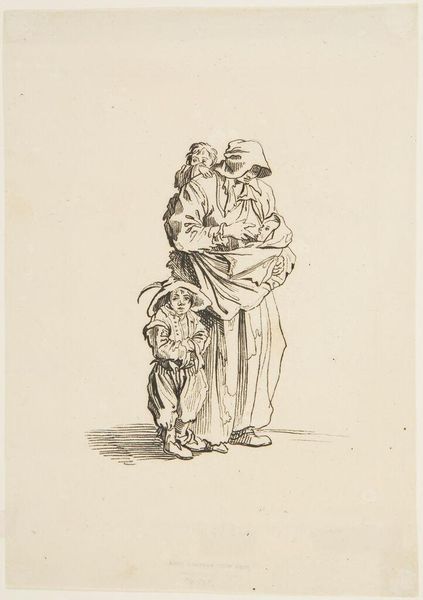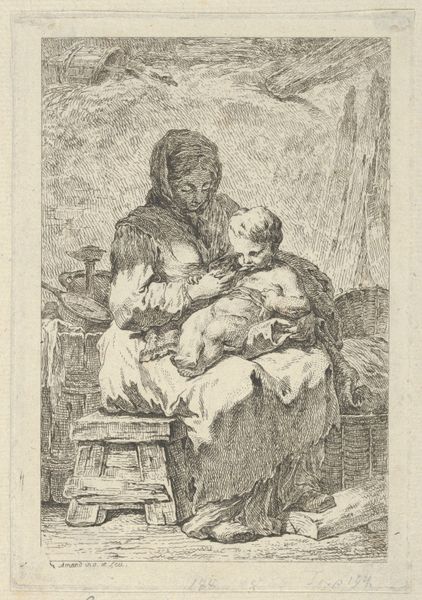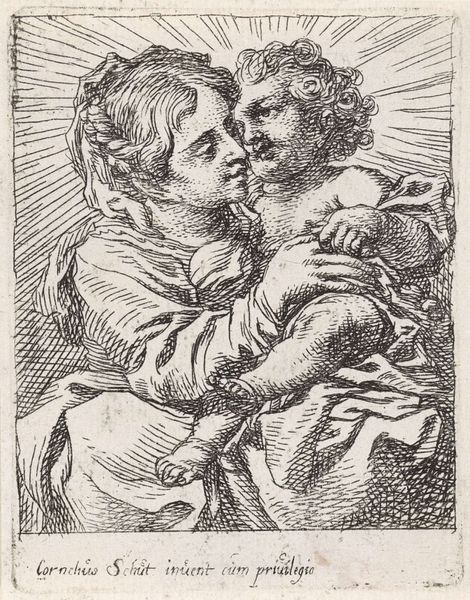
drawing, paper, ink
#
portrait
#
drawing
#
ink drawing
#
baroque
#
pen illustration
#
pen sketch
#
paper
#
ink
Dimensions: height 96 mm, width 88 mm
Copyright: Rijks Museum: Open Domain
Editor: Here we have "Saint Joseph with Christ Child in his Arms," an ink drawing on paper created between 1741 and 1745 by Giovanni Battista Tiepolo. The hatching and cross-hatching is very dense, creating dynamic tonal variations. What's your read on the visual strategies employed here? Curator: The interplay of line and form is indeed compelling. Note how Tiepolo uses varied line weights to define space and volume. Observe, too, the deliberate ambiguity in the background, contrasted against the more defined foreground figures. It’s an astute manipulation of depth. Where do you see evidence of Tiepolo embracing semiotic principles? Editor: Well, I notice how the delicate lines depicting the child's face suggest innocence, especially compared to the more sharply defined and somewhat worn features of Joseph, which suggest wisdom and age. Do you find that contrast impactful? Curator: Certainly. However, consider that the rough and free style, typical of baroque art, challenges traditional notions of beauty. The visible sketch-like quality becomes integral, drawing attention to the materiality of the work itself – the ink, the paper, the hand of the artist. Do you agree that Tiepolo experiments with texture as a meaning-making tool? Editor: I do see that now, how the texture adds another layer to the experience. It almost feels like I am looking at a study, a fleeting impression captured in ink. I really appreciate this deep dive into form, and now, it adds a lot more to the drawing than I originally saw. Curator: Indeed, and by engaging in visual deconstruction, we gain a better understanding of how art communicates. The careful attention to technique and formal structure truly underscores Tiepolo's artistry.
Comments
No comments
Be the first to comment and join the conversation on the ultimate creative platform.
